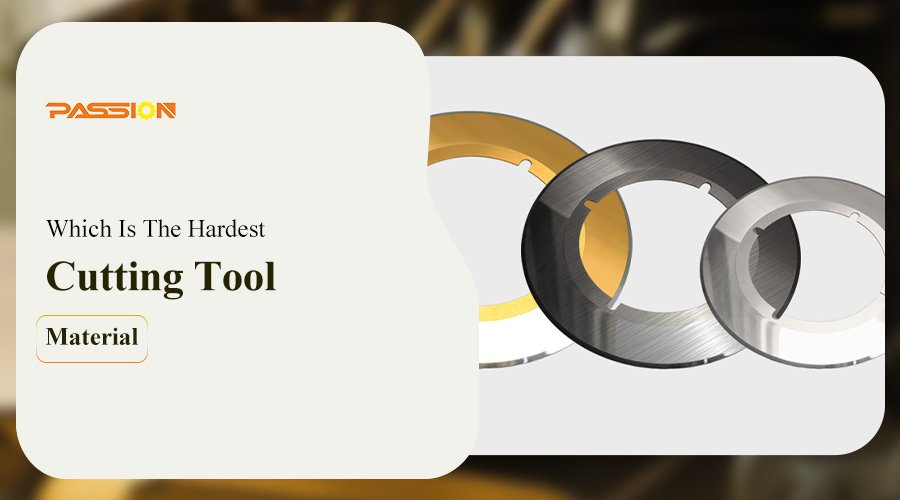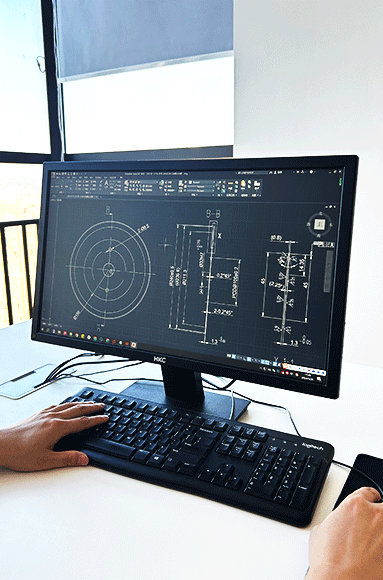When it comes to industrial blades, picking the right material can make a big difference in how well they perform, how long they last, and how much they cost you in the long run. Cutting tool materials are always changing to keep up with the needs of industries that need to cut things with precision and strength. So, which cutting tool material is the hardest and most reliable? Let’s take a look at the different materials people use today, what makes them special, and why some of them are the best cutting solutions you can get.
Polycrystalline diamond (PCD) is the hardest material used in cutting tools today. It has the highest wear resistance and the highest hardness. But, even though it’s the hardest, it’s not always the best choice for every application because it’s sensitive to heat and dissolves in iron-based metals. PCD tools are best for cutting non-ferrous metals and non-metallic materials. That makes them perfect for specialized applications like aluminum machining and cutting composite materials.
When you get into metal machining applications where temperatures and tool wear are high, you start to see other materials come into play. For example, cubic boron nitride (CBN) is almost as hard as diamond and has excellent hot hardness. That makes it great for high-speed machining of steel and cast iron. But how do these materials stack up against traditional carbide and ceramic tools?
Understanding The Types Of Cutting Tool Materials
The evolution of cutting tool materials reflects a drive for increased hardness, wear resistance, and toughness. Here’s an overview of the main types of cutting materials used across industries:
1. Polycrystalline Diamond (PCD)
2. Cubic Boron Nitride (CBN)
3. Ceramics
4. Carbides
5. High-Speed Steel (HSS)
Each of these materials has unique properties and applications, suited to specific machining needs and performance criteria.
What Is The Most Difficult Material To Cut?
Aggregated diamond nanorods are a man-made form of diamond that’s even harder than natural diamond. They’re the hardest material known to man, with a hardness of about 150 GPa. But, even though they’re the hardest, they’re not practical for general industrial applications because they’re super expensive and not readily available. In materials that you can actually get your hands on, PCD is the hardest material you can buy to make industrial cutting tools. It’s perfect for cutting non-ferrous materials with super precision.
What Is The Hardest Metal Cutting Tool Material?
For applications where you need to cut ferrous metals, cubic boron nitride (CBN) is the way to go. It’s almost as hard as diamond, and it can take the heat, which makes it great for cutting steels and cast irons. Even though CBN costs more, people use it because it lasts a long time when you’re cutting hard stuff. You’ll find CBN tools in places like automotive manufacturing, where they’re cutting hard stuff all the time.
CBN is great for heavy-duty metalworking applications because it can take the heat and the wear. That’s why the automotive and aerospace industries like it so much. It cuts down on tool wear and makes things more precise.
Which Cutting Tools Have The Strongest Strength?
In a lot of cases, carbide tools are the best of both worlds. They’re some of the toughest cutting tools you can get. Tungsten carbide, which is what most cutting tools are made of, is super hard and can keep an edge even when you’re doing something crazy. It’s not as hard as diamond or CBN, but it’s not as brittle either. That makes it perfect for stuff that’s going to get banged around and hit. That’s why you see carbide tools all over the place, from woodworking to metal fabrication.
Which Cutting Tool Has The Highest Hot Hardness?
When you need to cut stuff that gets hot, polycrystalline cubic boron nitride (PCBN) is the way to go. PCBN tools have crazy hot hardness, which means they can take the heat when you’re cutting really fast. That lets them handle the heat that comes from cutting really hard stuff, which is why you see PCBN tools used in places where other materials would get soft or bend when they get hot.
How Does Polycrystalline Diamond (PCD) Compare?
Polycrystalline diamond (PCD) is the hardest and most wear-resistant cutting tool material available, but it has limitations. PCD tools don’t handle heat as well as CBN or carbide, so they’re used mostly on non-ferrous materials and softer metals. However, in applications where heat is controlled, PCD is great for making very precise, clean cuts and extends tool life way beyond other materials. Industries that machine aluminum, composites, and other soft materials love PCD because it lasts and stays sharp.
Application Of Cutting Tool Materials In Industry
The choice of cutting tool material depends on factors such as the material being cut, the desired precision, and cost. For example, carbide blades offer a practical solution for industries that need a balance of hardness, durability, and affordability. At PassionBlade, we provide high-quality carbide and customizable industrial knives to meet the demands of various industries.
For heavy-duty applications, PCBN and CBN materials offer high-performance solutions, but they come with a premium price tag. In fields like aerospace and automotive manufacturing, where tool longevity and resistance to high temperatures are critical, these materials offer significant advantages. On the other hand, PCD is the material of choice in industries that focus on non-metal machining. With its exceptional wear resistance, it’s invaluable in industries like woodworking and plastic fabrication.
Choosing The Right Cutting Tool Material: Key Considerations
For B2B buyers in need of industrial-grade blades, selecting the right material depends on several factors:
Application: Non-ferrous vs. ferrous metal machining.
Cost vs. Performance: Balancing initial cost against tool longevity and durability.
Thermal Resistance: Requirements for hot hardness to withstand high-speed machining.
Impact and Toughness: Resistance to chipping and tool breakage under varying loads.
Industries with rigorous demands often choose carbide blades for their versatility, especially when provided by a supplier like PassionBlade, known for customizable and durable industrial knives suited to unique industrial needs.
The Final Verdict On Cutting Tool Hardness
The hardest cutting tool material, polycrystalline diamond (PCD), is unmatched for hardness and wear resistance, but it is limited to specific applications because it is sensitive to heat. For high-temperature applications in metal machining, cubic boron nitride (CBN) and polycrystalline cubic boron nitride (PCBN) are the preferred choices because of their hot hardness and durability. For general industrial applications, carbide is a practical balance of hardness, toughness, and cost, making it a good choice for many industries.
Choosing the right material depends on the specific requirements of the application, including cost, durability, and performance under various operating conditions. PassionBlade offers a wide range of customizable carbide blades and industrial knives designed to meet the needs of demanding industries worldwide. Whether you need high-hardness tools for challenging materials or versatile, customizable options, PassionBlade has the right solutions to enhance performance and longevity in your cutting operations.



